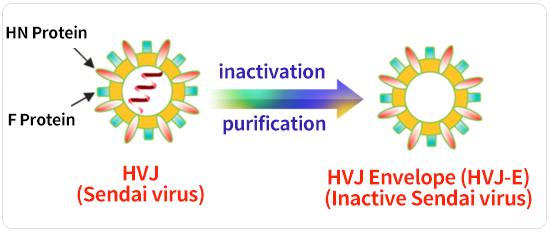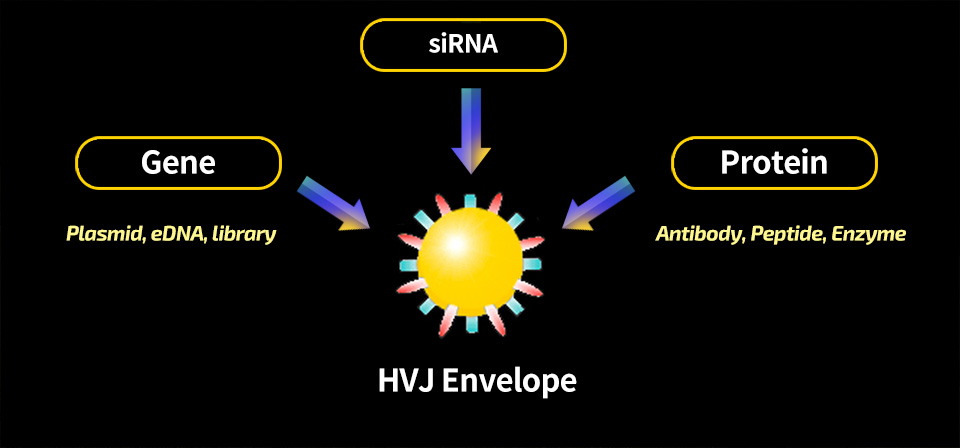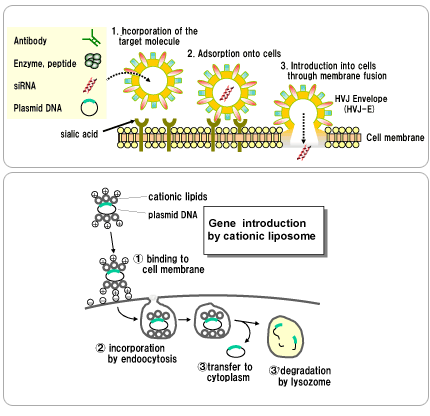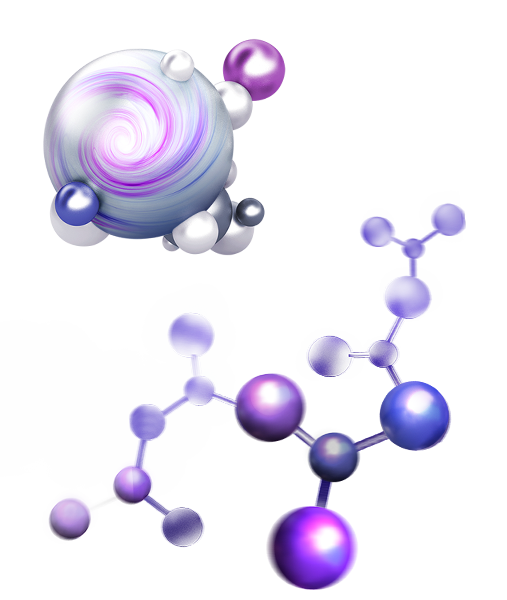

Hemagglutinating virus of Japan (HVJ) Envelope (HVJ-E) is a nonproliferative and noninfectious vesicle about 300 nm in diameter on average purified after complete inactivation of Sendai virus genomic RNA.

Since the F protein distributed on the HVJ-E envelope has high membrane-fusing potential comparable to that of live virus, it is possible to use HVJ-E itself as a cell-fusing agent or to introduce genes, proteins, anti-cancer agents, etc. in HVJ-E-incorporated form into cells for analysis of their functions.
Kaneda, Y., et al.: Hemagglutinating virus of Japan(HVJ)envelope vector as a versatile gene delivery system. Molecular Therapy, 6, 219-226(2002)

HVJ Envelope VECTOR is a novel and unique transfection kit which employs the membrane fusion ability of the envelope of Sendai virus(Hemagglutinating virus of Japan: HVJ).
The genome RNA of HVJ is completely inactivated, so that you can use it as a "non-viral" transfection reagent safely and easily.
The molecule to be transferred (DNA, protein, antisense oligonucleotide, siRNA/miRNA, etc.) is incorporated in the HVJ Envelope (HVJ-E) to yield an HVJ-E vector, which is then introduced into the target cell or tissue, making use of the membrane-fusion activity of fusion (F) protein.”.

Conventional non-viral transfection tools, including cationic lipids, are incorporated into cells through endocytosis which results in degradation of most parts of the transferred DNA by lysosomes. On the other hand, HVJ Envelope VECTOR resists degradation by lysosomes, making it easy to transfer the specified DNA. Therefore, HVJ Envelope VECTOR yields highly efficient gene expression. Sialic acid receptors, which are needed to trigger binding with HN protein, exist in almost all animal cells. Thus, HVJ Envelope VECTOR is useful for a wide range of targets

1. Safe for use
HVJ-E is made of Sendai virus (HVJ). The genomic RNA of Sendai virus has been completely inactivated using some reagent, leaving no possibility of infection or proliferation of HVJ-E in humans or experimental animals. Thus, this non-viral transfection tool does not require any special manipulation or facility and can be used safely in ordinary laboratories.
2. Introduction of various molecules
HVJ-E can incorporate a variety of molecules, e.g., plasmid DNA, siRNA/miRNA, or proteins.
HVJ-E-incorporated molecules are introduced into cells via membrane fusion.
3. Wide usability
Applicable to in vitro and in vivo transfection experiments
Applicable to difficult-to-transfect cells(e.g. primary T cells)
Suitable for high-throughput applications
4. Easy-to-use
Ready-to-use reagents (HVJ-E and auxiliary reagents)
Simple operability